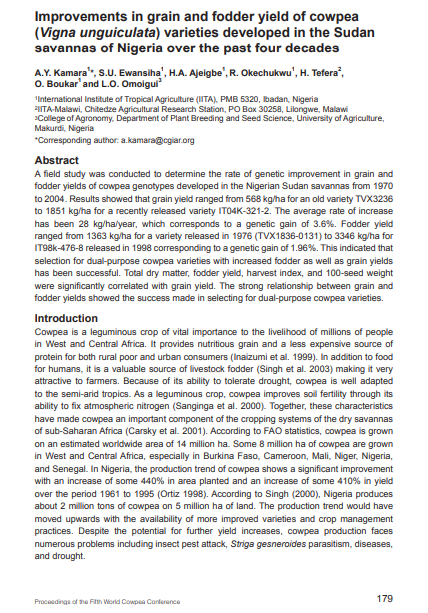Improvement in grain and fodder yields of cowpea genotypes representing four decades of breeding in the Nigerian Sudan savannas
Summary
A field study was conducted to determine the rate of genetic improvement in the grain and fodder yields of cowpea genotypes developed in the Nigerian Sudan savannas from 1970 to 2004. Results showed that grain yield ranged from 568 kg/ha for an old variety, TVX3236, to 1,851 kg/ha for a recently released variety, IT04K-321-2. The average rate of increase was 28 kg/ha/year, which corresponds to a genetic gain of 3.6%. Fodder yield ranged from 1,363 kg/ha for a variety released in 1976 (TVX1836-0131) to 3,346 kg/ha for IT98k-476-8, released in 1998, corresponding to a genetic gain of 1.96%. This indicates that selection for dual-purpose cowpea varieties with increased fodder as well as grain yields has been successful. Total dry matter, fodder yield, harvest index, and 100-seed weight were significantly correlated with grain yield. The strong relationship between grain and fodder yields showed the success made in selecting for dual-purpose cowpea varieties.
Open resource Download resource Access resource on external site

